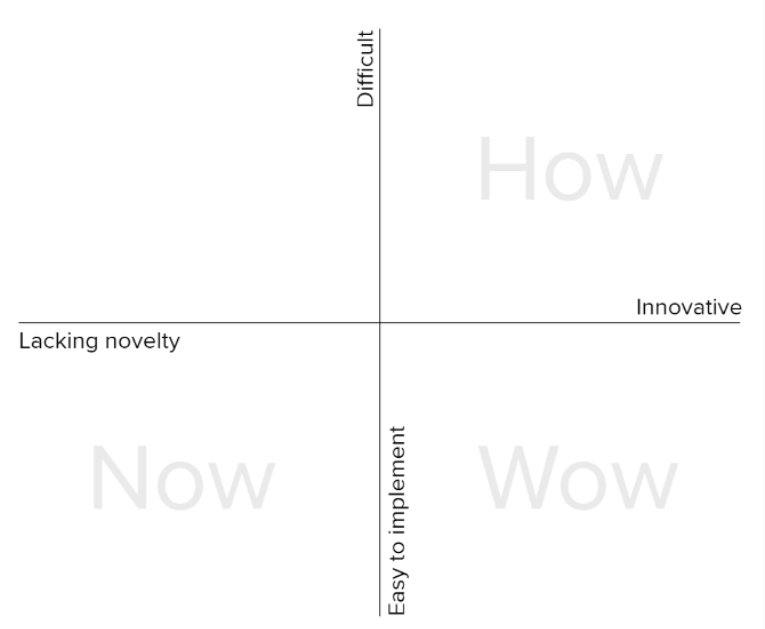Choosing ideas with Convergent Thinking
Have you ever experienced difficulty in choosing among ideas? It’s a common experience and we all have gone through it many times. In this blog, we want to present some techniques that make the process of choosing ideas less confusing, less time consuming and more certain.
We hope you have come here from our article on how to generate ideas using divergent thinking. If not, you might want to check that one out first because this article builds on what we learnt in the former.
Divergent thinking and the technique of mindmapping started out with a problem to solve and left us with a pool of ideas. At this point we are now ready to use convergent thinking to narrow down our ideas. As the name indicates, convergent thinking is the process of “converging’ our thoughts to a single idea or choice.

1) The How Now Wow method

Based on the combination of difficulty and innovation, we define the four regions as below:
Now: ideas that can be implemented immediately but which lack novelty.
Wow: ideas that can be implemented and are innovative.t
How: innovative ideas that could possibly be implemented in the future
Discard: ideas that are neither innovative nor easy to implement
Unlike the mindmapping technique, this method requires some preparation. First you need to take some sticky notes, or just paper cutouts if you don’t have them, and write one idea in each. Then take a large paper, preferably chart paper or newsprint paper, or a whiteboard or even your table if you can write on it and draw the axes as shown in the picture below.
Once you are clear about the meaning of each quadrant, you can segregate the ideas by evaluating their magnitude on each axis. The higher you value an idea in terms of innovation or difficulty, the farther along the axes you place it. Same applies along the negative axes.
2) The 4 category method
This method is quicker but less detailed than the How Now Wow method. This method works better while collaborating. Like the name indicates, there are four categories under which we try to pick ideas. Let’s have a look at the four categories:
The rational choice - ideas that are most easy to carry out, with low risk and simple resources. The benefits, however, might not be that great either
Most likely to delight - the ideas that are easy to execute and can also bring great benefit
The darling - the evaluators’ favourite ideas
The long shot - ideas that are difficult to execute, involve lot of risk, but offer great rewards if successful
Using this method involves voting. Each person in the group can pick one idea for each category. Same idea can be picked under multiple categories but a single category cannot have more than one idea under it. To vote, you can make use of stickers or use some code in the form of colors or numbers if you are doing it through. Here are the images of stickers that can be used in this method. These images are easily found in the inbuilt library of whiteboard tools such as Miro or Mural.

Once everyone can voted, we get a rough idea of the most popular ideas for each categories.
This method isn’t as detailed as the How Now Wow but is quick and helps get a collective opinion of the team.
These ideas can seem ineffective and requiring extra labor when you have a mere handful of ideas. But when you are dealing with a large number of ideas; especially when you are generating ideas in a group, these methods turn out to be incredibly effective and time saving. Although designed to choose ideas, these methods can be useful in decision making too.